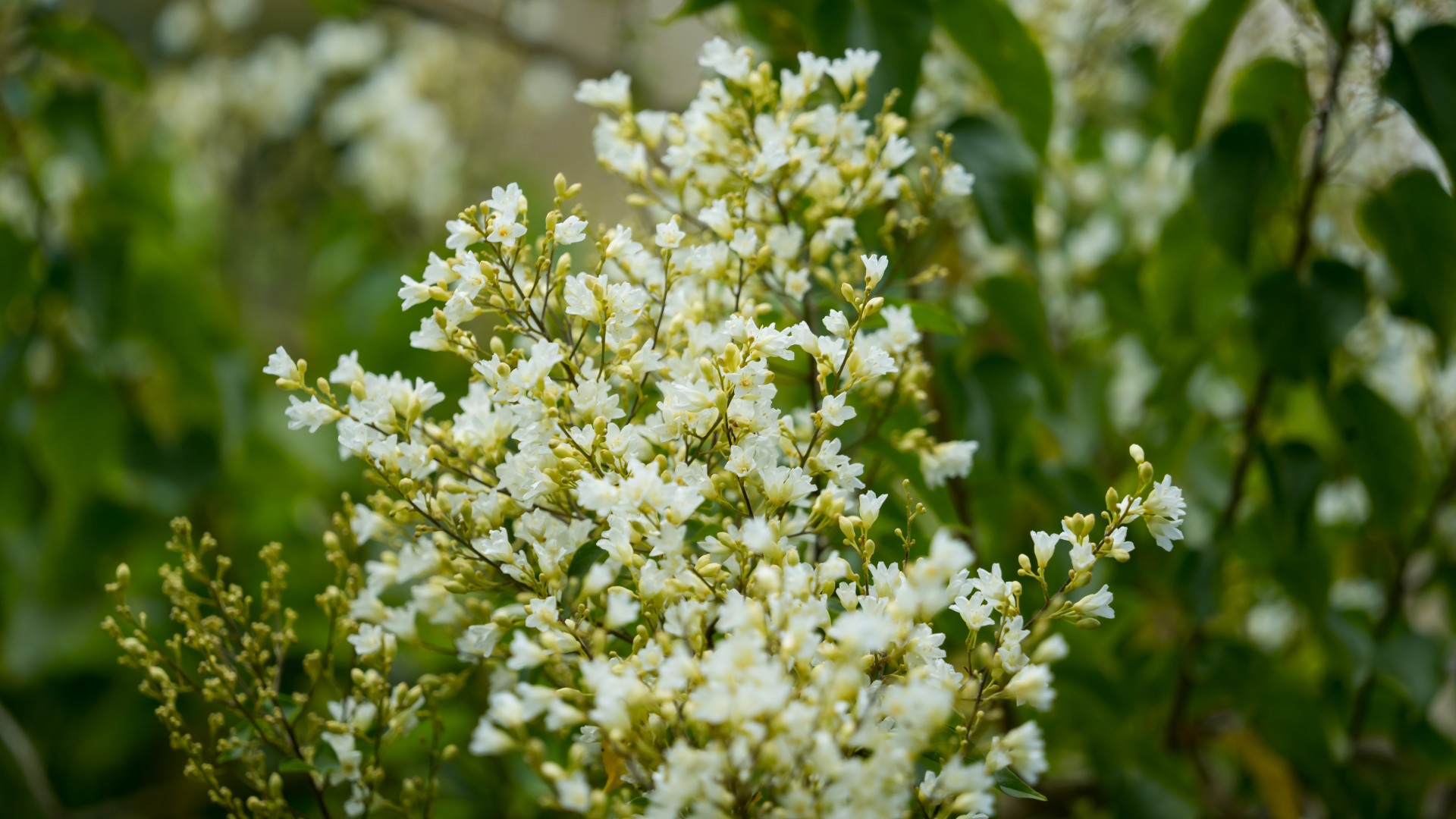Nutmeg (Myristica fragrans)
 Nutmeg flowers only reach up to 1cm in length! This is a female flower, which is usually borne solitarily.
Nutmeg flowers only reach up to 1cm in length! This is a female flower, which is usually borne solitarily.
Myristica fragrans, commonly known as nutmeg, is a tropical evergreen tree belonging to the family Myristicaceae, consisting of approximately 20 genera with at least 500 species. This tree is native to the Maluku region in Indonesia, but is widely cultivated in India, Southeast Asia, North Australia and the Pacific Islands. It can grow up to ten meters tall and only starts producing fruit after seven to eight years. Each tree can produce fruit for several decades, making it a valuable long-term crop.
 Early fruit development of Myristica fragrans.
Early fruit development of Myristica fragrans.
The nutmeg flowers are rather inconspicuous, where they reach only up to 1cm length. This species is incompletely dioecious, which means that male and female flowers are usually borne on separate male and female trees, but sometimes male and female flowers can be found on the same tree. The female flowers have only one carpel and one ovary in each flower, which is common among the flowers in the Myristicaceae family. The male flower is composed of about 2 to 22 anthers which are fused to a central column. These small flowers are generally pollinated by even smaller insects, namely, flies, beetles and thrips.
 Developed fruits split open on the tree, revealing the waxy red arils (mace).
Developed fruits split open on the tree, revealing the waxy red arils (mace).
The well-known spice, nutmeg, comes from the fruit of this tree. The nutmeg fruit is a fleshy drupe that is approximately 5 to 6cm in length. It turns from a pale greenish yellow to a yellowish orange when ripe and splits open on the tree to reveal the hard brown-black endocarp surrounded by a bright red lacy aril. This red aril is attractive to large birds which swallow the aril and endocarp whole then regurgitate or defecate the seed to germinate elsewhere.
Within the endocarp is the seed, which is the spice known as nutmeg. It has a spicy yet sweet flavour and is dried and ground into nutmeg powder commonly used in cooking. On the other hand, the red aril is removed and dried to produce mace, which has a delicate aroma and is less commonly used in cooking, but most prominent in Indian, Middle Eastern, Caribbean, and French cuisines.
 Split fruit of the Myristica fragrans. Red waxy arils are harvested for mace, while the black seed is harvested for nutmeg.
Split fruit of the Myristica fragrans. Red waxy arils are harvested for mace, while the black seed is harvested for nutmeg.
Not only is nutmeg a common spice used for flavoring, it has medicinal properties as well! Nutmeg contains numerous chemical compounds that are considered anti-oxidants and contains health promoting and disease preventing properties. The most well-known medicinal use of nutmeg is to promote digestion and treat issues such as indigestion, bloating and nausea. The active compounds in nutmeg have multiple curative uses in traditional medicine to treat depression or fungal infections.
You may find these minute blooms on the Nutmeg trees within the Colonial Garden. Try to spot the split fruit on the same trees too to see the red arils peeping out!
Want to see our nutmeg trees and other amazingly edible plants in our Gardens, but can't figure out quite where they are?
Check out our two fun, free, guided Nature & Sustainability Tour routes coming in January 2025! Our expert guides will introduce you to a huge diversity of plants with fascinating forms and tantalizing tastes in our new 'A Sensory Stroll - Hidden in Plain Sight' & 'A Sensory Stroll - Can Eat or Not?' weekend guided walking tours!
Written by: Sharifah Osman, Senior Manager (Research and Horticulture)
As an avid flora photographer, Sharifah is consistently curious about the natural world that surrounds her. So much so that she eventually pursued a career in horticulture while dabbling in botanical art and photography during her free time.



